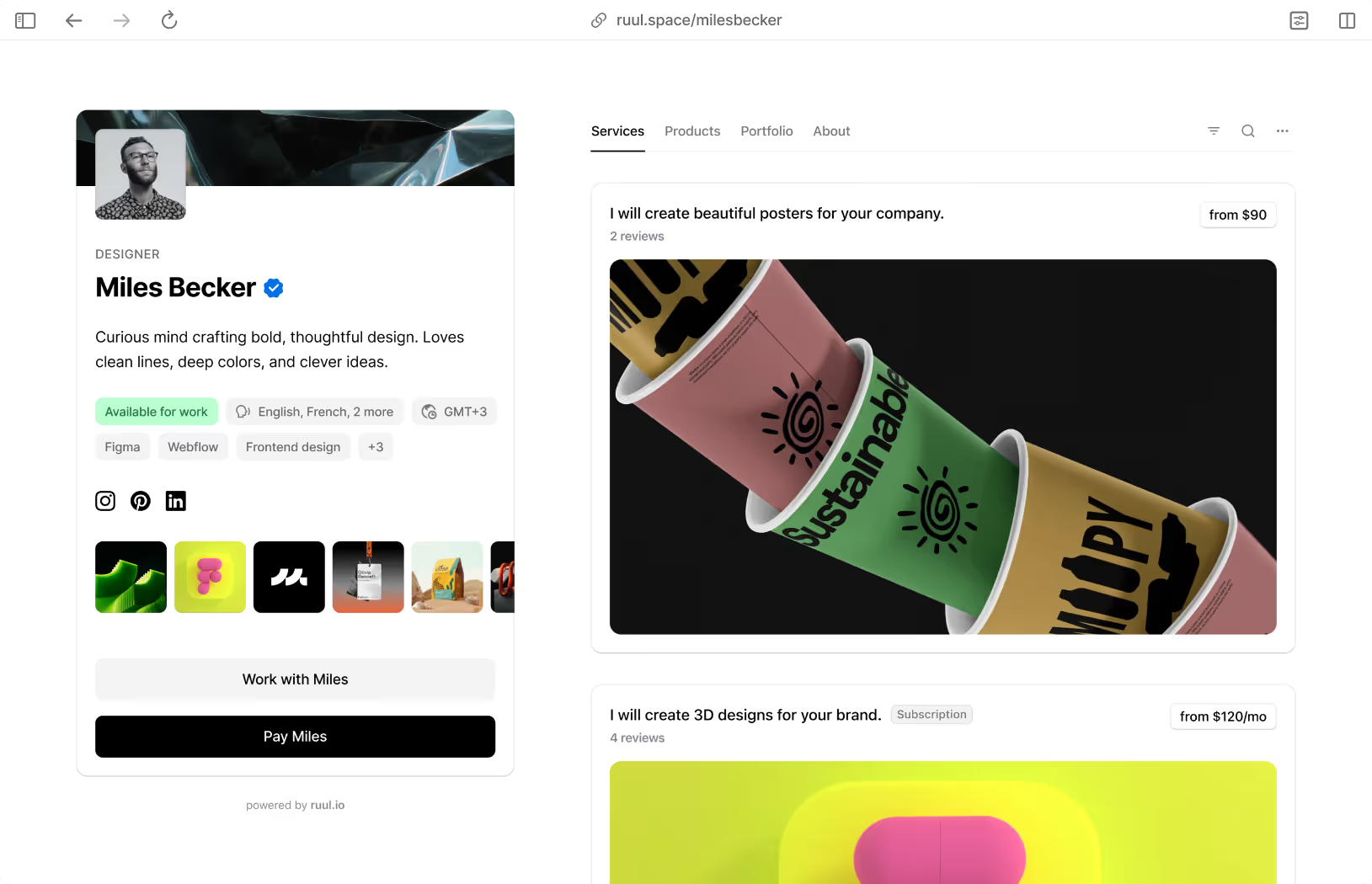You’ve probably been there before. Arguing over a price that you thought was already agreed on, or emailing a client for the seventh time about a late payment. If you haven’t already been there, then you’ve probably heard or read about these horror stories. The truth is getting paid is one of the trickiest parts of being a freelancer.But, by learning the lingo, you can arm yourself and make negotiations fairer and less stressful. Most importantly, knowing these terms will make sure that you can get money into your pockets. These are the invoicing and payment terms that every freelancer needs to know to be successful.
Payment options you might come across explained
Down Payment
A down payment is money that a client/buyer pays at the beginning steps of the purchase. A down payment usually is a portion of the total price agreed upon. It’s usually associated with large transactions like buying a car or a house. In our case, think of it as the money paid to you upfront before the project begins.
Retainer Fee
A retainer fee is an amount paid upfront to secure the services of an individual or a group for a specific service. In this way it is similar to a downpayment, especially considering that a retainer fee is usually only a part of the total fee to be paid. An example of this would be a company hiring a specialist to perform an audit.
Net terms
A net term is the name given to a type of payment method. It’s usually written out as something like “net 10” or just “n10”. Net, in this case, means the full sum to be paid. The term then is how long the client has to pay this amount after a request has been made. So, “n10” means the total payment is due ten days after requesting it.Net payments can vary but some of the most common intervals are 7, 10, 30, 60, or 90. Keep this in mind when negotiating payment options, so if you are low strapped for cash at the moment, try negotiating a lower term.Net terms are useful in these transactions because it gives clients the time to get their money to pay you, and gets you the money in what should be a reasonable time. However, there are times where you may need money in such a hurry that you might be willing to go the extra mile in negotiating.
2/10 Net 30
“2/10 Net 30” is an example of one of these negotiating techniques. “2/10 n30” means that if the client is willing to send you the money within 10 days, that you would be willing to give a 2% discount on the amount owed as an incentive for them. If they choose not to do this, then the payment option will roll over to being “n30” or getting the sum within 30 days of sending the invoice.Another example of a term that you might see thrown around is “1/10 net 30”, meaning you offer a 1% discount. You might also see “1/10 net60” or “2/10 net 60” as well. Remember, the most important thing about this term is that you are offering a percentage-based discount to your client to entice them to pay you earlier.
EOM
EOM stands for “End of Month”. This payment option is useful when you want to be paid within the same month of sending your payment request. This is best used when you send the request at or near the beginning of the month to give your client the time to secure the money to pay you. Just make sure you give your client enough time to secure their funds.
15 MF
15 MF means that after sending your invoice you expect to be paid on the 15th of the month. This payment option is a great option to build a regular budget if you can negotiate this with your clients.
Upon Receipt
Upon receipt simply means that you want to be paid as quickly as possible once you have billed your client. You should make sure that your client has the funds to pay you and that you give them a payment option that’s easy to use.
Quotes and Estimates
Quotes and estimates are essentially the same things. They are the bits of information that you give your client that spells out how much you expect to be paid, the breakdown for how long the project is going to take, and how you came to deciding the price you charged.So, when a client asks for a quote, they are asking for how much you’re going to charge them and how long it’s going to take. Quotes/estimates are important for negotiations between you and your customer so that both of you can iron out all of the details of your transaction.
Terms of Sale
The terms of sale are the final payment terms that you and your customer have agreed to. It has information like the cost, the time to complete the project or send the product, the method of payment, and when the payment is due. It lays out all the information needed for you and the customer so that there are no mistakes or misunderstandings about the transaction.
Line of Credit Pay
A line of credit payment is a payment option that gives your customer the ability to pay for your services for an extended amount of time. In other words, you give them the option to pay you on credit. Given the risks involved, you should probably only consider this when working with a reputable client that you believe will pay you when the time comes.
Invoicing terms all freelancers should know
Interim Invoice
An interim invoice is a payment option that negotiates payments for milestones in long-term projects. It usually takes the total sum of the agreed payment and breaks it down into installments. It’s a good way to maintain some income on large projects that are going to take a while to finish.
Proforma Invoice
A proforma invoice is a preliminary bill of sale that represents the agreed-upon price that you and your client have negotiated. It shows the total cost of the products or services and provides your client with all the information needed to go forward with their purchase. One way to think of it is to see your quote as a part of the negotiation process, while the proforma invoice is the finished product.
Recurring Invoice
A recurring invoice is an invoice that is sent to the same customer repeatedly and with the same details. It’s a repeating invoice that you give your client for a regular service that you continue to do.It may sound a bit unfamiliar to you at first, but you probably deal with recurring invoices in your day-to-day life. Think about your gym membership or your Netflix subscription. You pay Netflix the same amount of money every month to binge-watch the latest documentary series.
Interest Invoice
If it was agreed to in the negotiations, you send an interest invoice to a customer if they missed their payments. The invoice charges interest on top of the total the customer agreed to pay originally.The invoice will display things like the interest rate, how many times the customer failed to pay, and the interest charged on the missed payments. Using this calculator, you can easily calculate the interest that should be added to the total.
Early Payment Discount
An early payment discount is largely self-explanatory. To make paying you early an attractive option, you offer your customer a discount if they can pay the charge early.It’s usually customary to give the client a 5% or 10% discount to pay early once the project is completed. It’s good for when you’re working on a larger project that promises to pay a significant sum so that you can still make lucrative deals.
Ruuling
When there are many terms and rules, you sometimes may find it challenging to deal with your invoices as an independent professional. By 'Ruuling,' you can agree with your clients about the payment terms on customizable contracts, issue cross-currency invoices to business clients anywhere and collect payments without the need to chase after your client. To try Ruuling out, join the community of over 35,000 freelancers worldwide today.










